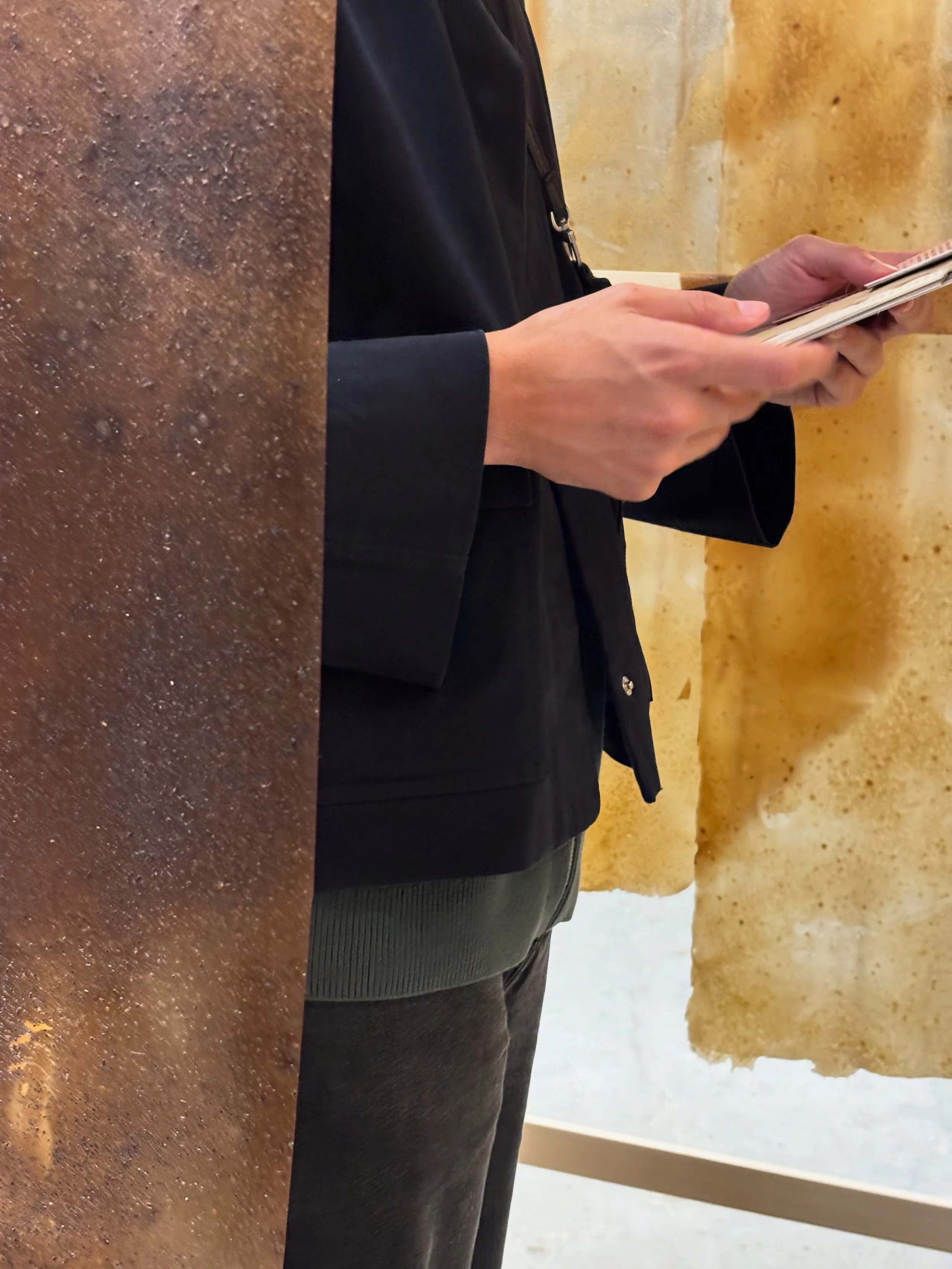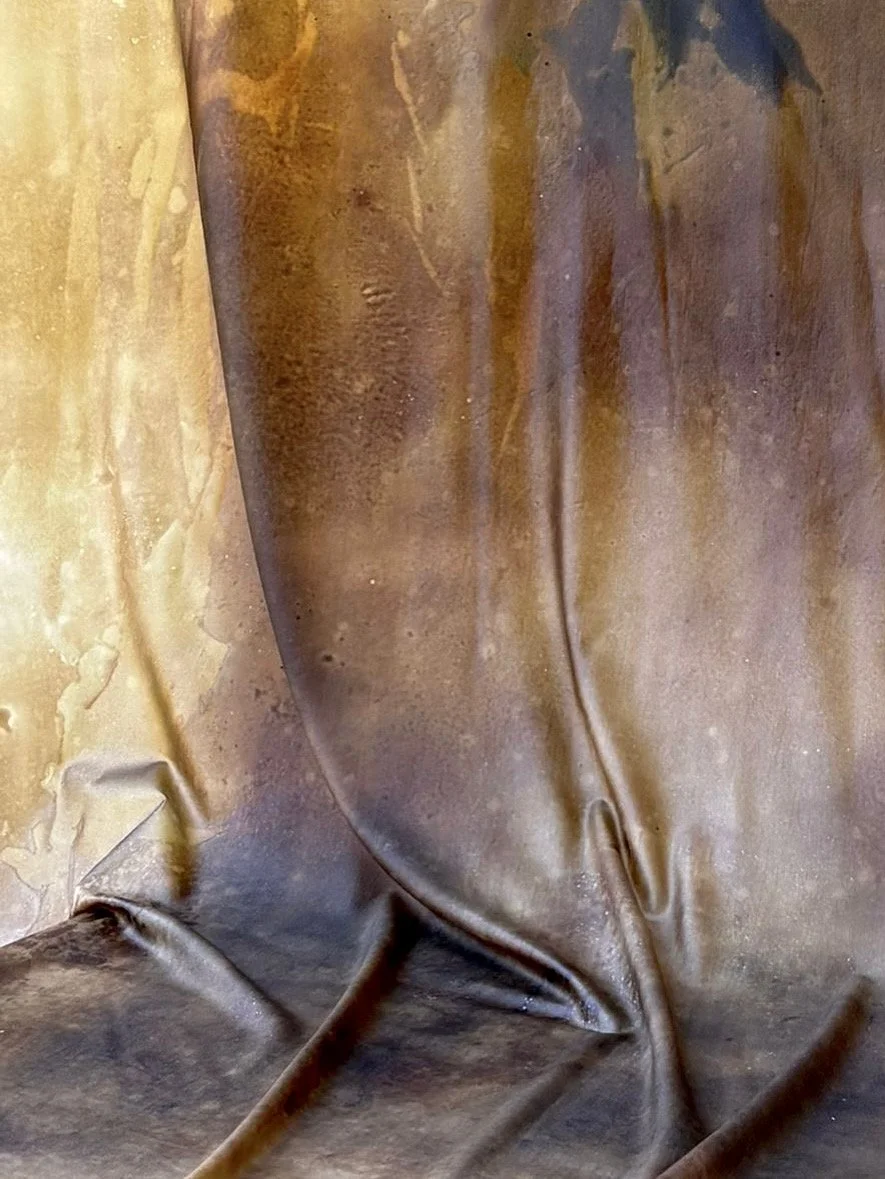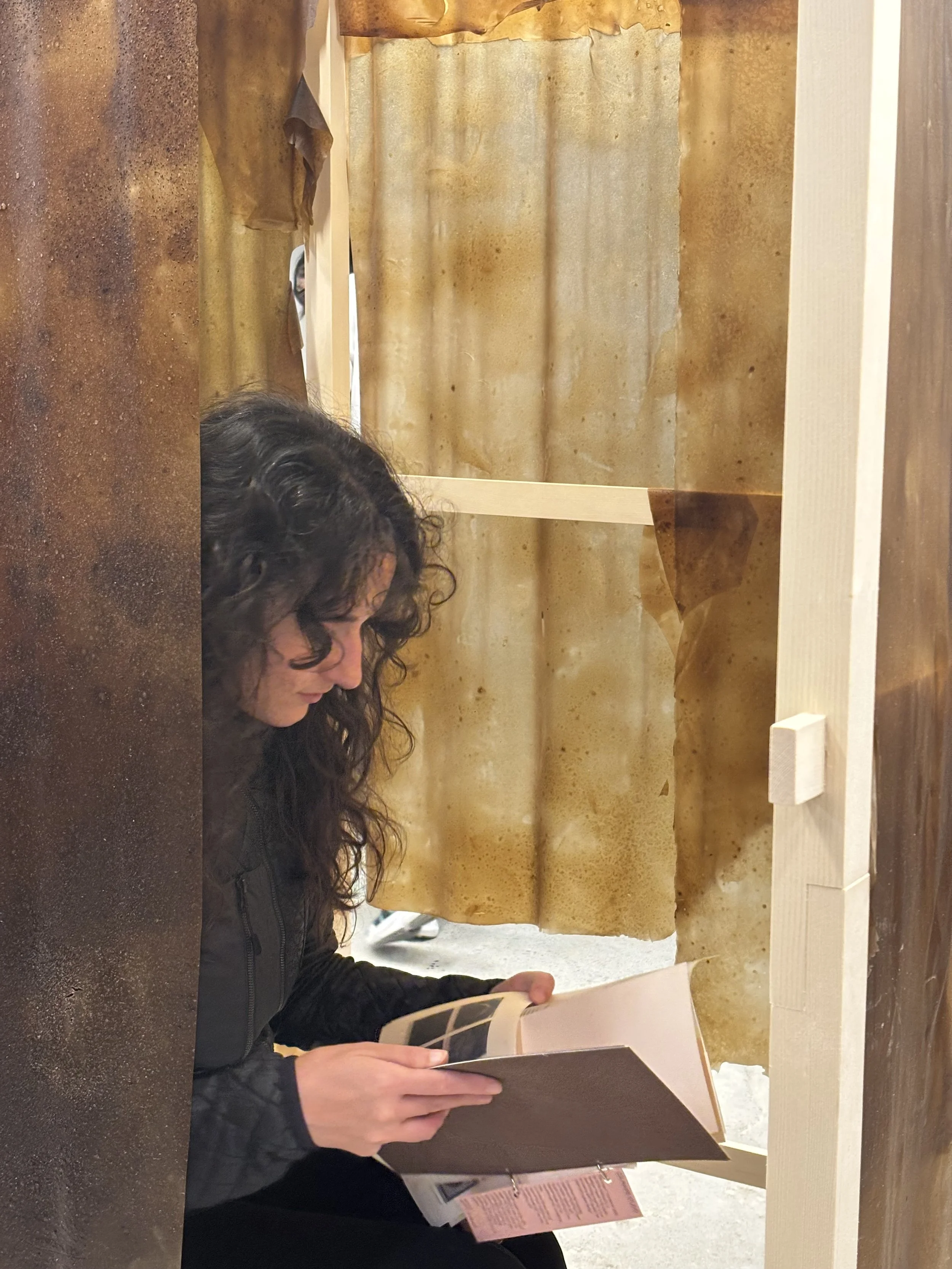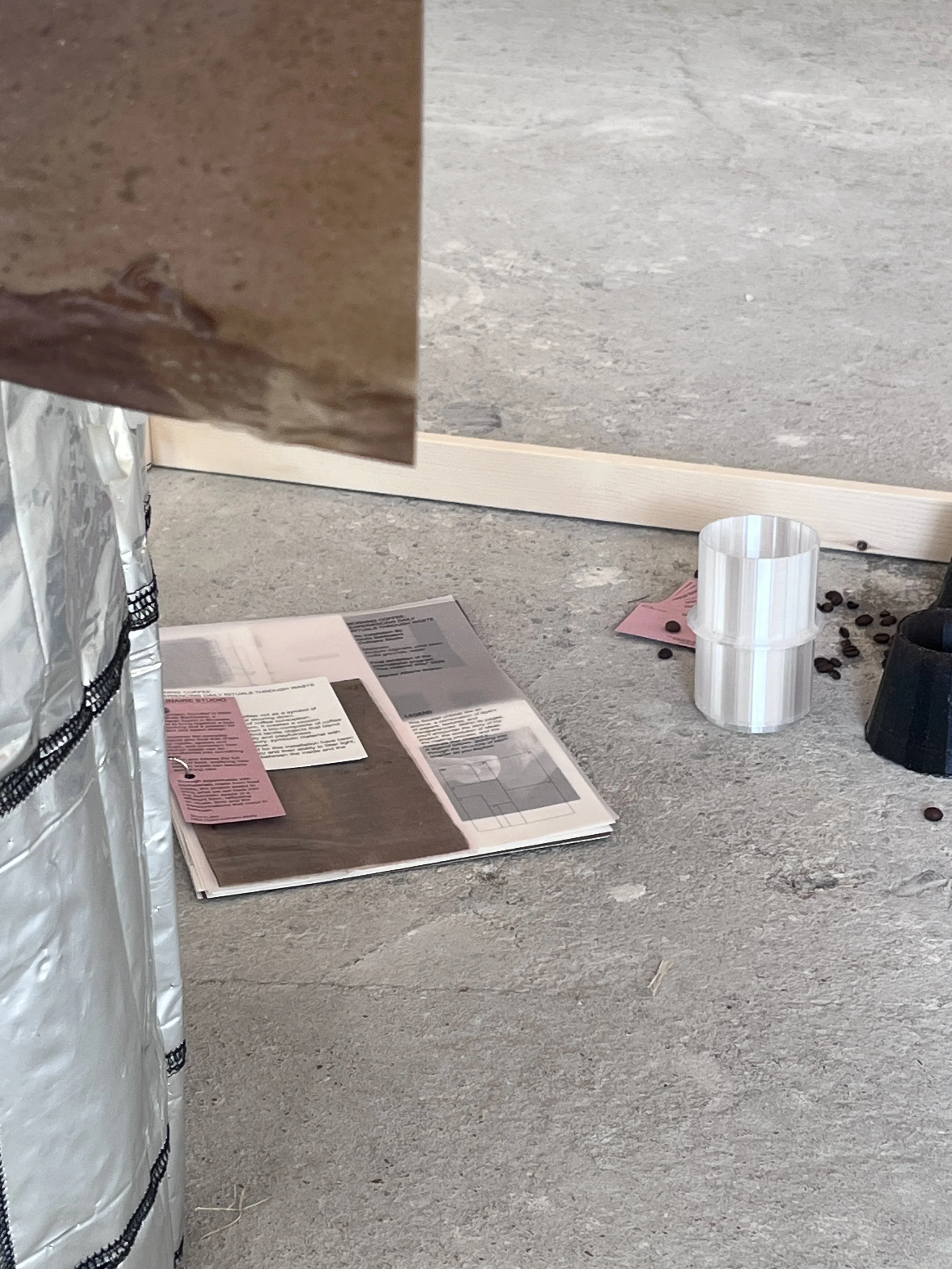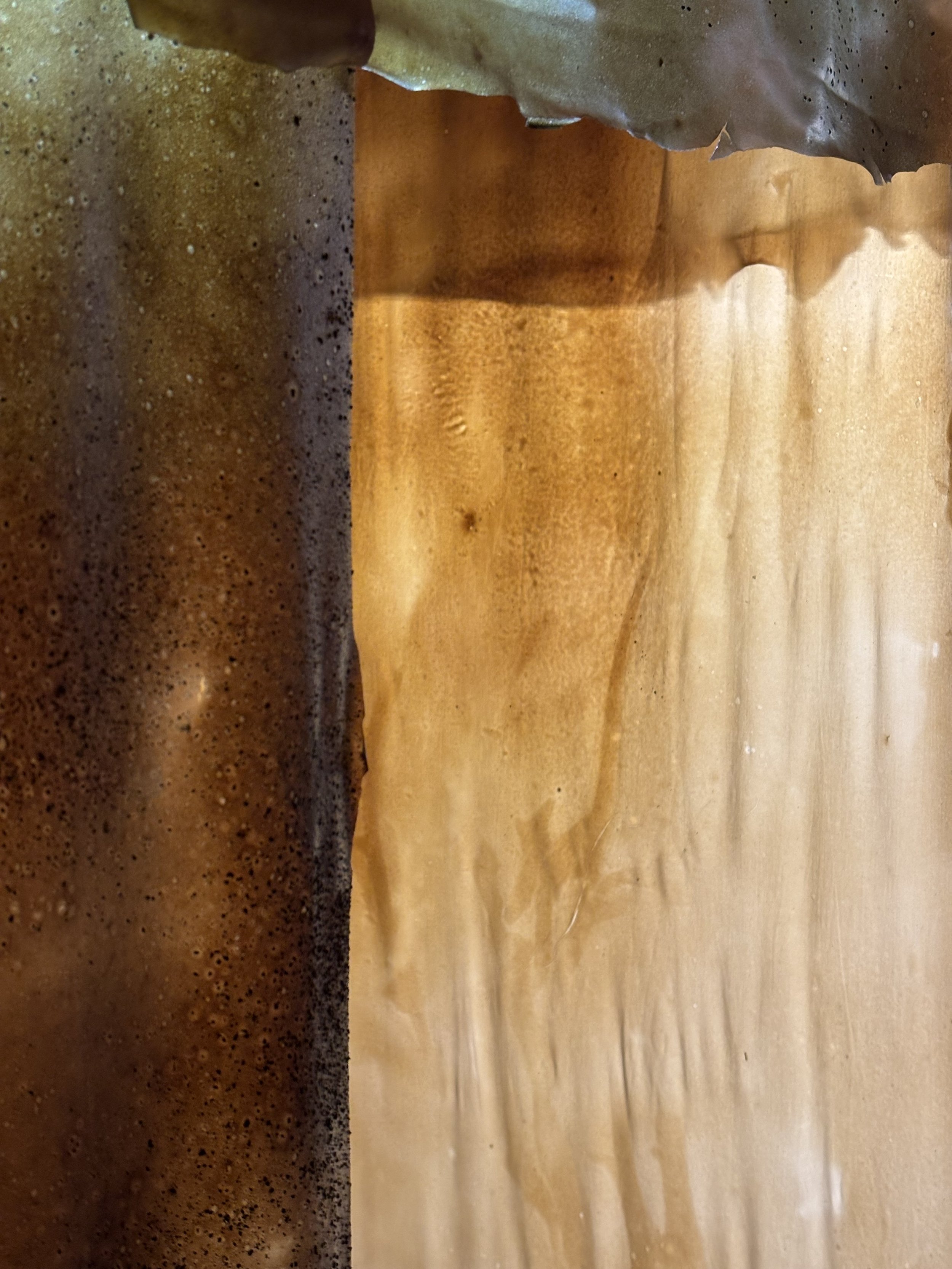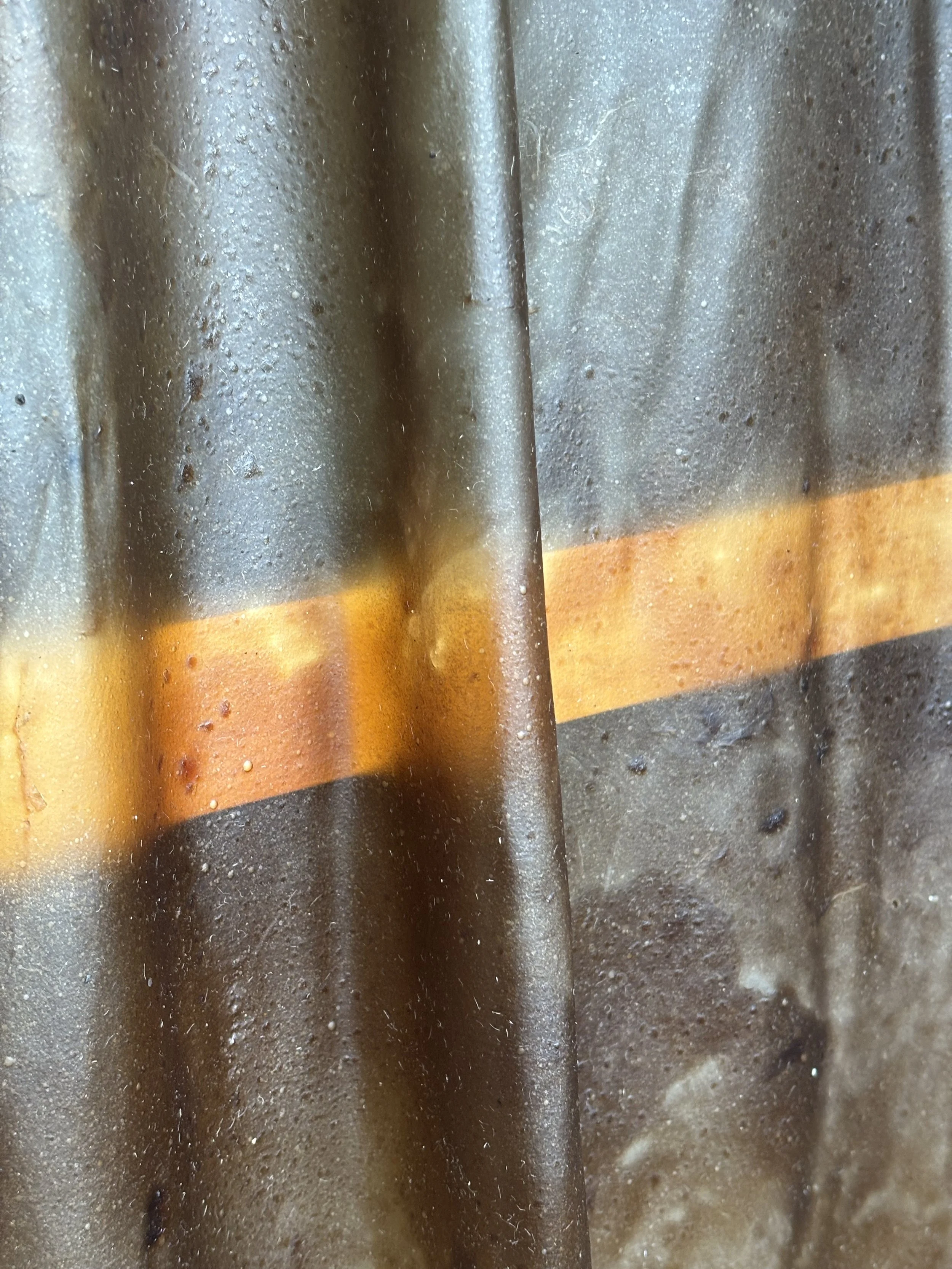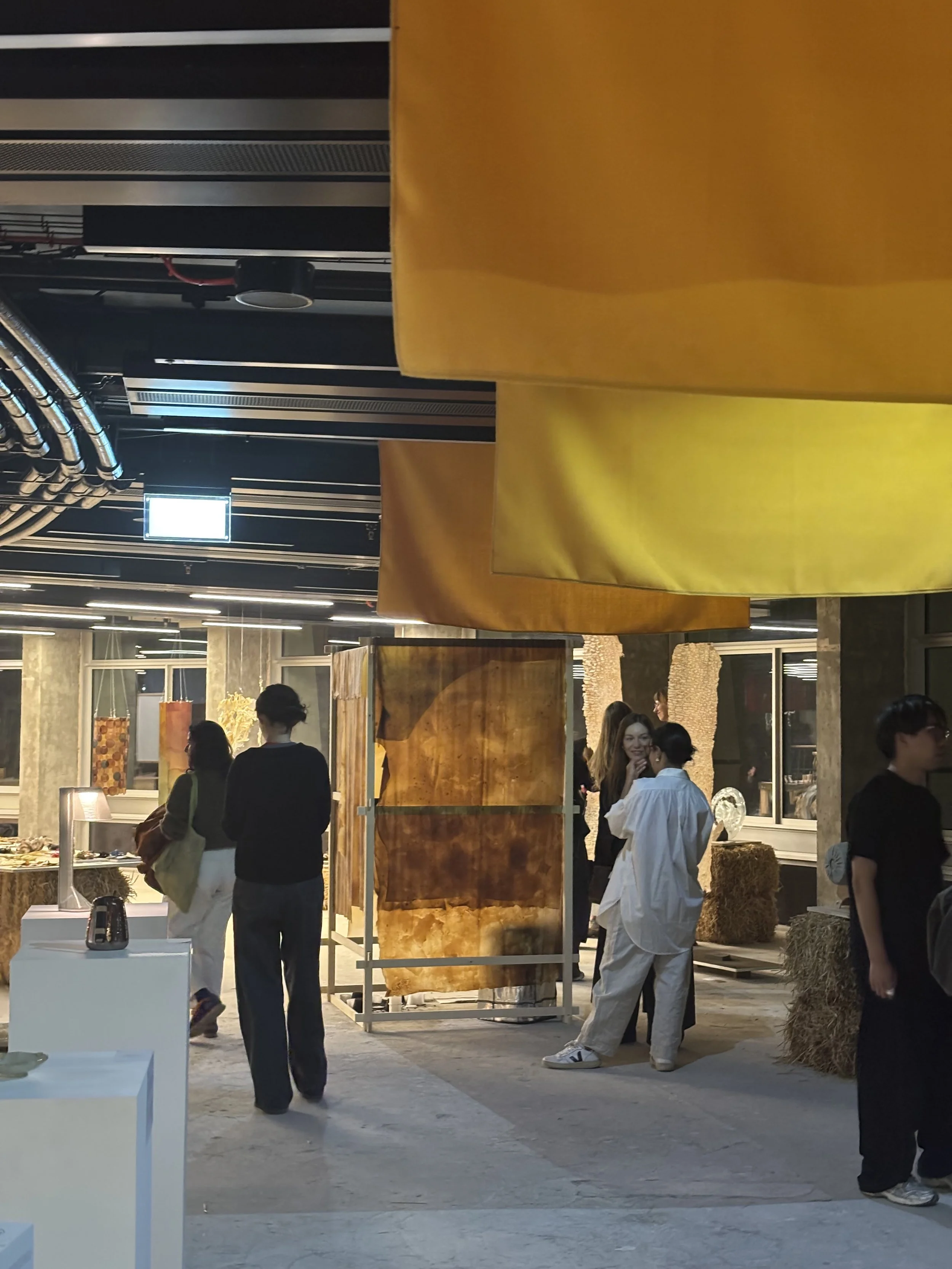Morning coffee:
EXPERIENCING DAILY RITUALS THROUGH WASTE
Installation at the London Design Week 2025
@Space House The Material Way for Material Matters
MORNING COFFEE
EXPERIENCING DAILY RITUALS
THROUGH WASTE
INSTALLATION BIOMATERIALS AT LONDON DESIGN WEEK 2025
Year: 17-20th of September 2025
Space House
1 Kemble Street (Kingsway), London
Tutor: Alberte Hølmo Bojesen
This installation explores coffee not as a symbol of productivity but as a ritual of slowing down.
Using three waste streams of coffee consumption: grounds, water, and aluminum, it creates a cocoon translucent volume made from a bio-composite of coffee and algae.
Inside, you will find tactile objects that blend utility and dream. Practicality and playfulness.
It reframes waste as a sensory, symbolic material with emotional and functional value.
The Biomaterials developed for this installation have been chosen for their transparency and their ability to filter light, creating a subtle boundary between the inside and the outside.
MATERIALS: Sodium alginate, coffee grounds and leftover water.
Pine resin and coffee grounds
Coffee is one of the most widely consumed plant based products across the world, about 2.25 billion cups of coffee are consumed every day worldwide. Whether as first drink in the morning, a soothing cup during the day or a final drink after a meal in the evening, coffee is omnipresent in everyday life.
With countless rituals tied to the daily consumption of coffee, this drink—perhaps more than any other—holds deep significance
across cultures, symbolizing community, ritual, and moments of conviviality.However, coffee also has a significant carbon footprint. This is largely due to the land use and water consumption of coffee production, and glo- bal transport from producers to consumers. Acknowledging both its value and its environmental cost, we have a responsibility to consume coffee consciously and to rethink its lifecycle, not only as a final product but through the many waste streams its production and consumption generate.
This installation explores and reuses three key waste outputs from coffee consumption (water, coffee grounds, and aluminum packaging) each shared across various users and in public, residential and productive spaces.
While coffee is often associated with speed and productivity in a capitalist context, this project reimagines it as a ritualistic pause, a gentle transition between the structured demands of daily and the oneiric state.
The installation takes the form of a small wooden structure with leathers hanging on it: a soft, translucent cocoon space that momentarily disconnects you from the outside world.
It offers a sensory, tactile experience whose materiality suggests both fragility and protection: the shell is made of a bio-composite membrane, combining coffee grounds, leftover water from coffee production with sodium alginate.
Inside the volume, the objects present carry a dual function: one ambiguous and poetic, linked to the oneiric realm; the other more practical and grounded. Next to a pouf made from recycled aluminum coffee packaging, a series of modular objects is displayed.
